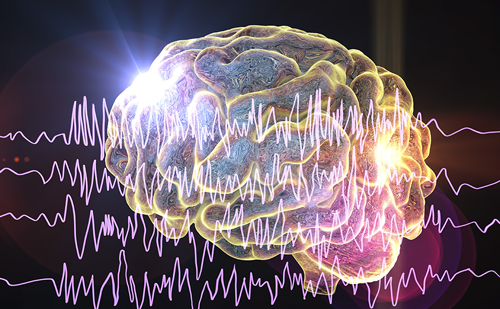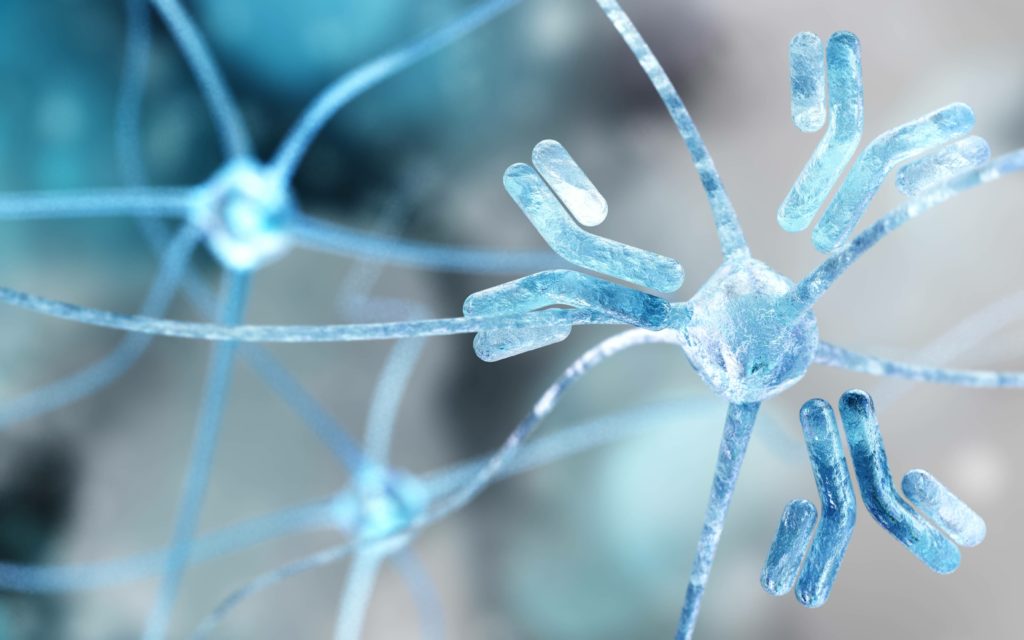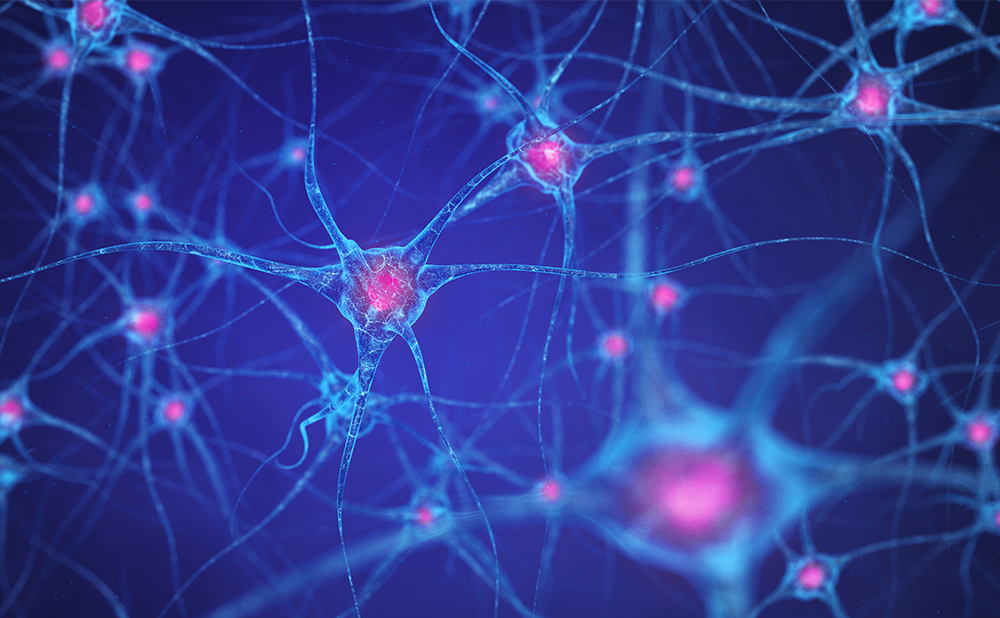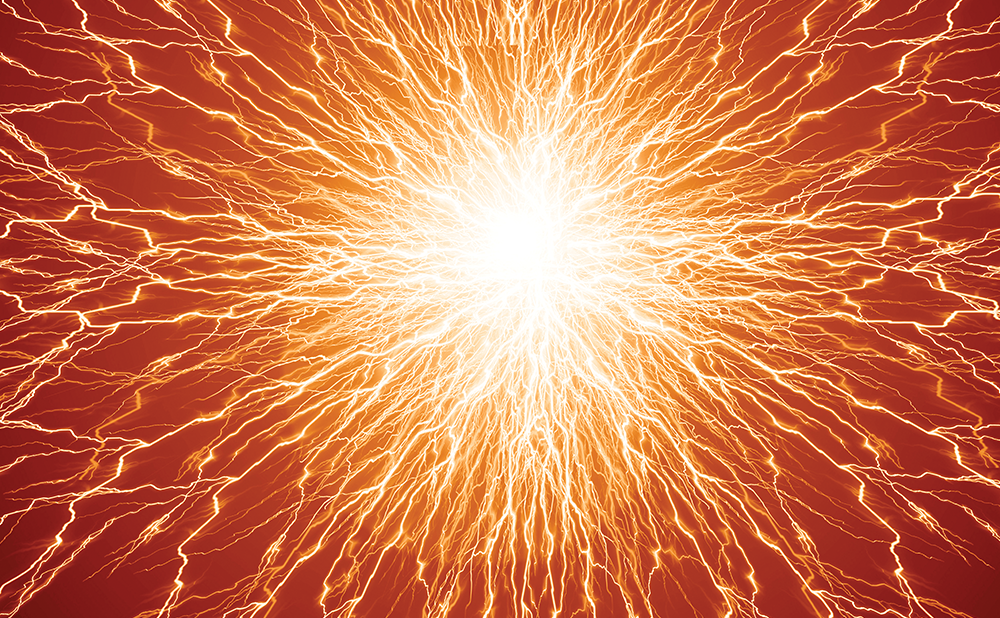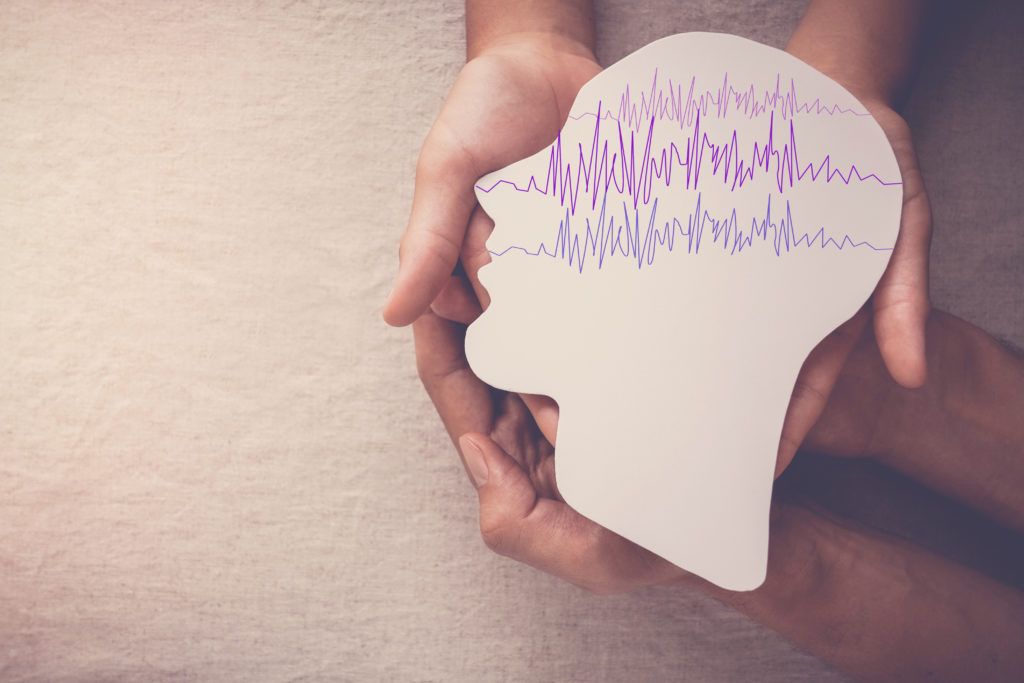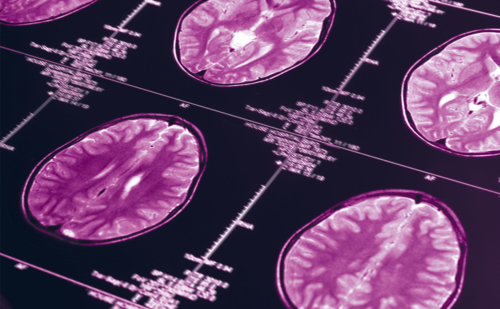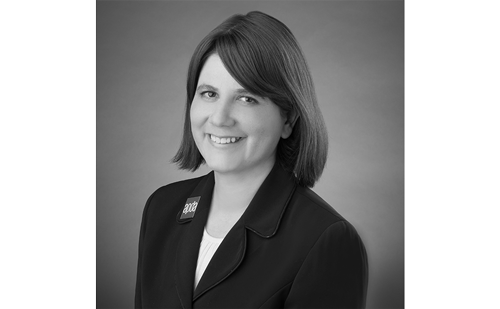Epilepsy affects approximately 1% of the global population, with one-third of patients remaining refractory to medical therapy.1 Drug-resistant epilepsy (DRE), defined as the failure of two appropriately chosen antiseizure medications (ASMs) to achieve seizure freedom, poses significant risks, including injury and sudden unexpected death in epilepsy (SUDEP).2 Early identification of DRE is critical to enable timely exploration of non-pharmacological interventions.
For patients with DRE, several non-pharmacological options are available. Resective surgery involves excising the epileptogenic zone if anatomically feasible, offering the highest likelihood of seizure freedom. However, it is often contraindicated in cases involving eloquent cortex or multifocal seizure onset.3,4 Ablation provides targeted destruction of seizure-causing tissue, while dietary therapy, such as the ketogenic diet, can reduce seizure frequency.4,5 Neurostimulation, which uses electrical modulation of brain activity, is another key option.
Although not curative, neurostimulation significantly reduces seizure frequency and enhances quality of life.6 Established modalities include vagus nerve stimulation (VNS), which stimulates the vagus nerve to mitigate seizure activity; responsive neurostimulation (RNS), a closed-loop system that detects and interrupts seizure patterns and deep brain stimulation (DBS), targeting structures like the anterior thalamus or centromedian nuclei (CMN) (Table 1).6–16 Emerging techniques, such as transcranial direct current stimulation (tDCS), transcranial alternating current stimulation (tACS), transcranial magnetic stimulation (TMS), epicranial stimulation and external trigeminal nerve stimulation (eTNS), are also under investigation. This review article evaluates both established and emerging neurostimulation therapies, underscoring their pivotal role in managing DRE and optimizing patient outcomes.
Table 1: Summary of US Food and Drug Administration–approved neuromodulation treatments6–16
| Category | VNS | RNS | DBS |
| FDA approval | 1997, refractory focal epilepsy, age 4 and above7 | 2013, refractory focal epilepsy, no more than two seizure foci; age 18 and above6 | 2018, refractory focal epilepsy, age 18 and above8 |
| Programming | Open loop, scheduled stimulation (typically 30 seconds ON and ≤5 minutes OFF); magnet can be used to manually deliver stimulation at seizure onset; Closed-loop stimulation using heart rate detection available in newer models9 | Closed loop; stimulation triggered by detected abnormal patterns (e.g. rhythmic changes in frequency, bursts of spike or slow wave activity); up to five stimulations delivered per event6 | Open loop; scheduled stimulation (typically 1 minutes ON and 5 minutes OFF)8 |
| Battery life (years) | 4–88 | 810 | 311 |
| Side effects | Hoarseness, coughing, laryngeal paresthesia, dyspnoea and laryngismus7 | Implant site pain, headache and dysaesthesia12 | Implant site pain/paresthesia, depression and memory impairment13 |
| Surgical adverse events | Implantation site infection: 2%, haematoma 0.6%14 | Implantation site infection: 12%, 2.7% haemorrhage10 | Implant site infection: 12.7%, 4.5% haemorrhage, incorrect lead placement 8%15 |
| Efficacy | 3-year median seizure frequency reduction: 44%16 | 9-year median seizure frequency reduction: 75%10 | 7-year median seizure frequency reduction: 75%11 |
DBS = deep brain stimulation; FDA = US Food and Drug Administration; RNS = responsive neurostimulation; VNS = vagus nerve stimulation.
Neuromodulation
Neuromodulation aims to target and disrupt dysfunctional brain networks.17 Early reports by Penfield and Jasper (1954) demonstrated that cortical electrical stimulation resulted in flattening of normal and epileptiform discharges.18 Further insight was gained through focal cortical stimulation during intracranial monitoring to map epileptogenic and functional regions.18 Stimulation in certain regions resulted in afterdischarges similar to natural spontaneous epileptiform activity. Further studies used real-time seizure detection which delivered stimulation directly to the epileptogenic zone or the anterior thalami, leading to seizure reduction.18 Continuous neuromodulation first targeted the cerebellum (1972) and anterior thalami (1985).19
Vagus nerve stimulation
VNS is a cyclical modulatory stimulation technique not based on ictal or interictal electroencephalography (EEG) activity. VNS was approved in 1997 as an adjunctive therapy for DRE with expanding indications for patients aged 4 and older. Studies suggest potential efficacy for various epilepsy syndromes, such as Lennox–Gastaut syndrome, generalized onset seizures and seizures associated with tuberous sclerosis complex.9,20–25 It is also an approved treatment for resistant depression.9 Research into VNS dates to the late 19th century, with early experiments by Corning on the carotid sheath targeting cerebral blood flow.26 Preclinical studies in the 20th century confirmed VNS’s ability to modulate cortical activity and suppress seizures in animal models, culminating in the development of the first implantable device by Zabara.27
The VNS system consists of a pulse generator implanted in the left chest wall, connected to helical leads on the left vagus nerve–chosen due to its asymmetric cardiac innervation. The device and lead are implanted as an outpatient procedure.9 Activation begins 10–14 days post-implantation, with typical settings of 30 Hz, 500 ms pulse width and a 30 seconds on/5 minutes off cycle, though parameters are individualized. Patients can trigger extra stimulation with a magnet at seizure onset, and the device’s battery lasts approximately 4–8 years.9 Over the years, VNS technology has improved, with the latest models such as the Sentiva having heart rate detection software triggering VNS stimulation.28 The physician uses a wand and a computer to modify the stimulation parameters.
The first human VNS implantation occurred in 1988.29 Subsequent clinical trials have consistently demonstrated VNS efficacy. The double-blind E03 trial, involving 114 patients, found a 24% mean seizure reduction in the high-stimulation group versus 6% in controls, with 31% achieving at least 50% reduction; magnet use was effective in 60% of patients who were given high stimulation.30 The E05 trial, with 196 participants, replicated these findings, reporting a 28% mean reduction with 23% achieving at least 50% reduction.31 Long-term data indicate progressive improvement, with a median 44% seizure reduction at 3 years compared with 37% at 1 year.16 VNS may reduce the risk of SUDEP, with rates decreasing from 2.47 per 1,000 patient-years in years 1–2 to 1.68 per 1,000 in years 3–10.32
Common adverse events include dysphonia in 50% of patients, coughing in 41%, pharyngitis in 27%, paresthesia in 28%, dyspnea in 18% and nausea in 19%. Surgical complications occur in 4% of cases.7
VNS offers a valuable option for managing drug-resistant epilepsy and related conditions, backed by decades of research and clinical evidence with relatively low morbidity. As of 2021, over 125,000 VNS systems had been implanted globally, with a long track record of safety and efficacy across diverse patient populations.33 Registry data from the CORE-VNS study (n=792) reflects its growing role in clinical practice. Median time from diagnosis to implantation has decreased from 22 years in 2004 to 13 years in 2022. Patients in the registry had failed an average of more than seven antiseizure medications before implantation, and those with both focal and generalized epilepsy received VNS sooner than those with focal epilepsy alone, likely due to the latter being considered for surgery first.34 These trends reflect both the growing body of evidence supporting VNS and the importance of continued efforts to define its optimal place in the treatment pathway.
Responsive nerve stimulation
RNS was approved by the US Food and Drug Administration (FDA) in 2013 as an adjunctive therapy for adults with medically refractory focal epilepsy localized to one or two seizure foci. The device consists of a cranially implanted neurostimulator connected to one or two cortical strips and/or depth leads, each with four contacts.35,36 Patients use a wand and tablet to download data at home, while providers use a tablet for programming and data review.37
RNS is a ‘closed loop’ system that continuously monitors electrical activity and delivers RNS to abnormal epileptiform patterns. The device’s seizure detection algorithm determines when stimulation is administered, allowing for targeted therapy that enhances temporal and spatial selectivity. Ideally, stimulation occurs early in seizure onset to prevent progression and clinical manifestations/sequelae.6 Stimulation may neutralize, disrupt or drive activity to restore normal function.38 Additionally, it has been proposed that stimulation of epileptiform activity, not only seizure onset patterns, may have long-term neuromodulatory effects.
The precise mechanism of RNS remains unknown. Hypotheses include changes in local inhibition/excitation, cerebral blood flow, neurotransmitter release, cortical organization, synaptic plasticity and neurogenesis.35 Physicians program detection and stimulation parameters, generally following manufacturer recommendations.36 The neurostimulator records electrographic data, including long episodes of abnormal activity, which correlate with patient seizure diaries and aid in assessing seizure burden and ASM efficacy.6 While RNS detects electrographic seizure activity, it cannot confirm clinical seizures.
An RNS pivotal study enrolled 191 adults with DRE. Participants were randomized to active or sham stimulation. This was followed by stimulation optimization over 4 weeks for the treatment group and then a blinded evaluation period of 12 weeks. Afterwards, stimulation was turned on for all participants.12
During the final month of the blinded evaluation period, the treatment group had a 41% seizure reduction versus 9% in the sham group. At 2 years, 55% of patients achieved >50% seizure reduction.35 Long-term data showed a median 75% seizure reduction at 9 years, with 73% achieving >50% reduction, 35% achieving >90% reduction and 21% being seizure-free in the final 6 months of follow-up.10 A retrospective study across eight epilepsy centres reported median seizure reductions of 67% at 1 year, 75% at 2 years and 82% at 3 years.36
Implantation site infections occurred in 12% of patients. These involved soft tissues, not the brain or meninges, though 16 patients were explanted. Non-seizure-related haemorrhages occurred in 3% of patients, none with neurological sequelae.10 The safety profile of RNS is comparable to DBS, resective epilepsy surgery and intracranial EEG. No deterioration in mood or cognition was observed, and quality-of-life improvements were maintained over 9 years.
In an analysis of 707 patients, the SUDEP rate was 2 per 1,000 patient-years, suggesting a protective effect compared with typical rates of 6.3–9.3 per 1,000 patient-years in medically refractory epilepsy.10
Although not FDA-indicated, other patients with medically resistant epilepsy may benefit from RNS. A small (n= 25), retrospective, multicentre study investigated thalamic RNS in patients with focal or generalized epilepsy (5). Leads were placed in the anterior nucleus of the thalamus (ANT) or CMN, with 21 patients receiving both thalamic and non-thalamic stimulation. At 2 years, the median seizure reduction was 65%.39 A study of 17 patients with idiopathic generalized epilepsy and multifocal epilepsy, using RNS to the bilateral CMN, reported an 83% average seizure reduction after at least 1 year. Long-term follow–up is needed.40
Patients often underestimate their seizure frequency, particularly for nocturnal and focal impaired awareness seizures. RNS offers long-term ambulatory monitoring in a natural setting, identifying patterns that may predict ASM response and periods of heightened seizure risk.41 Chronic RNS recordings in patients with bilateral mesial temporal epilepsy revealed predominantly unilateral seizure onsets in a subset of patients, with some patients subsequently having unilateral mesial resections with success.42
Insights from long–term intracranial monitoring with RNS have suggested that the timing of seizures involves the confluence of varying biological rhythms including ultradian (within 1 day), circadian (once a day) and multidien (many day) patterns. These timescales converge and can influence seizure risk.43 RNS offers a unique opportunity to study these patterns individually and improve seizure forecasting. RNS demonstrates continuous improvement in seizure frequency over time, as well as benefits in cognition, mood and quality of life.44
Deep brain stimulation
DBS uses electrodes targeting multiple sites, including the thalamus, cerebellum, nucleus accumbens, subthalamic nucleus, hypothalamus and other regions.1 DBS is thought to work by desynchronizing neural activity, preventing excessive synchronization that can impair cognition and consciousness.45 In the 1940s, Dempsey and Morison demonstrated that thalamic stimulation could induce recruiting rhythms on EEG. Later, Mirski and Fisher (1993) found that high-frequency stimulation (100 Hz) of the mammillary bodies, which project to the ANT, delayed seizure onset and increased seizure thresholds in rats.46 The ANT is an influential node in seizure networks, particularly involving seizures originating from the anterior to the mid-hippocampus and the midline frontal regions via the circuit of Papez.1
The DBS pivotal trial was SANTE, a multi-centre, double-blind, randomized trial of 110 adults with focal medically refractory epilepsy.15 Patients underwent bilateral electrode implantations and were randomized to stimulation or no stimulation for 3 months. This was followed by an unblinded phase from 4 to 13 months during which all patients received stimulation. At 2 years, there was a 56% median reduction in seizure frequency.15,47
Long-term follow–up showed a median change in seizure frequency of 69% at 5 years and 75% at 7 years.13 There were significant improvements in seizure severity and quality of life. The gradual improvement in seizure reduction over years of stimulation suggests a potential neuromodulatory effect.11
Side effects and complications included depression in 37% of patients, though two-thirds had a history of depression. Additionally, 27% reported memory impairment, with half of these participants having a history of memory impairment. However, objective cognitive testing and mood assessments noted improvements in attention, executive function and mood compared with baseline.13 Paresthesias were reported in 23% of patients, implant site pain in 24% and implant site infection in 13%. Haemorrhages occurred in 4.5% of patients, though these were not symptomatically or clinically significant. Leads were not placed in the correct target in 8% of cases.11,13
The SUDEP rate was 2.1 deaths per 1,000 person-years, including definite or probable SUDEP. Importantly, this is much lower than the 6.3–9.3 per 1,000 patient-years in patients considered candidates for epilepsy surgery.11
Other DBS targets in epilepsy include the CMN of the thalamus, given its high connectivity to the striatum, frontal regions and brainstem, ideal for generalized epilepsy.48 This nucleus is thought to play a key role in both the initiation and organization of spike-wave discharges in generalized epilepsy.49
A single-blinded trial of bilateral CMN DBS in patients with generalized and frontal lobe epilepsy found that 5/6 patients achieved a >50% seizure reduction and an overall 81% seizure frequency reduction. In contrast, outcomes were less robust for frontal lobe epilepsy.50
CMN DBS studies in Lennox–Gastaut syndrome (LGS) reported an 80% seizure reduction over 18 months, though complications included skin erosions requiring explant in two cases.51 The ESTEL trial, a double-blind study in 19 patients with LGS, found significant electrographic seizure reduction, with 59% achieving a >50% seizure reduction versus none in the control group.48 Longer follow-up is needed to clarify long-term efficacy.
Animal studies suggest that the basal ganglia modulate seizure activity via the substantia nigra pars reticulata (SNr) and globus pallidus interna, primarily through excitatory input from the subthalamic nucleus (STN).52 High-frequency STN stimulation may suppress cortical hyperexcitability by modulating glutamatergic projections and inhibiting the SNr, which disinhibits midbrain anticonvulsant pathways.53 Inhibition of the STN has been shown to suppress seizures in animal models, and chronic high-frequency STN stimulation is already used safely and effectively in Parkinson’s disease.54 Stimulation studies revealed that ictal activity from the cortical surface propagated to the ipsilateral STN in focal motor seizures.55 STN-DBS may suppress motor-related abnormal excitability and modulate motor cortico-subthalamic circuits, mitigating seizure expression.
In a study of five patients with progressive myoclonic epilepsy, high-frequency DBS of the STN and SNr reduced myoclonic seizures by 30–100%.56 Another small study of five patients reported seizure reductions of 67.1–80.7% in three patients with focal seizures originating in the sensorimotor cortex.53
Patients with refractory focal motor seizures may benefit most from STN stimulation, though some evidence supports its use in progressive myoclonic epilepsy, Dravet syndrome and Lennox–Gastaut syndrome as well.57 Prospective randomized trials are needed to establish optimal stimulation parameters.
Emerging approaches for brain stimulation
Transcranial direct current stimulation
tDCS is a noninvasive neurostimulation technique that applies a low-intensity electrical current (1–2 mA) across the scalp to modulate neuronal membrane potentials. The effects depend on electrode placement and current direction: neurons near the cathode are hyperpolarized, while those near the anode are depolarized. In patients with epilepsy, the cathode is positioned over the likely epileptic focus to reduce excitability, while the anode is placed over a non-epileptogenic area. The goal is to induce long-term neuronal depression and suppress spontaneous cell firing, though the precise mechanisms remain unclear.58
Multiple studies support tDCS’s potential as an epilepsy treatment. We reviewed eight published studies (n=179), with response rates ranging from 40 to 60%. In sham-controlled trials (4 of 8), active stimulation consistently led to significantly greater reductions in seizure frequency.59–66 Placebo responses have also been observed, with 25% of patients belonging to the sham group in one study experiencing a >50% reduction in seizure frequency.64 The data are limited by patient variability, short follow–up and unreliability of seizure counts.
tDCS is generally well tolerated. Reported adverse events include tingling at the stimulation site, itching, mild erythema and dizziness.58,67 Some patients have experienced transient seizure frequency increases during treatment, though seizures returned to baseline after discontinuation.59,60 The risk of seizures occurring during stimulation appears low; one study identified only five cases among 253 participants who received at least one active tDCS session.67
Despite promising findings, variability in study design, patient populations and follow-up durations complicates interpretation. A key factor is treatment session frequency. Multi-cycle protocols appear more effective than single-cycle protocols.59,61 Long-term studies are essential for defining optimal protocols, particularly given the logistical challenges of frequent in-clinic sessions. An ongoing study is investigating at-home tDCS, which may improve accessibility.68 Another consideration is the choice between bipolar and multichannel stimulation, with the latter potentially improving targeting and reducing unintended stimulation. However, head-to-head trials are needed to determine the superior approach.59
Transcranial alternating current stimulation
tACS is another non-invasive neurostimulation technique being investigated for epilepsy. tACS delivers sinusoidal electrical stimulation to modulate intrinsic neural oscillations using electrodes placed on the scalp. It is hypothesized that applying multiple frequencies can disrupt neuronal synchronization and influence seizure activity.58,69
To date, only one tACS study has been published. It included 23 patients with multifocal drug-resistant epilepsy, randomized into sham (n=7), tACS-30 (30 minutes of stimulation, n=7) or tACS-60 (60 minutes, n=9) groups. Participants received three consecutive days of treatment. At the two-month follow-up, no significant changes in seizure frequency were observed. No serious adverse events were reported.69 Given the current paucity of data, it is unclear whether tACS has potential as an epilepsy treatment.
Repetitive transcranial magnetic stimulation
rTMS uses an electromagnetic coil to deliver repetitive magnetic pulses to the cortical tissue, causing axonal depolarization. High-frequency rTMS increases neuronal excitability, whereas low-frequency stimulation (≤1 Hz) exerts an inhibitory effect. While it is hypothesized that repeated high-frequency stimulation induces long-term potentiation and low-frequency stimulation leads to long-term depression, further research is needed to elucidate rTMS’s long-term mechanisms.70
rTMS was FDA-approved for major depressive disorder (MDD) in 2008. For MDD, high-frequency stimulation (10–20 Hz) is applied over the left dorsolateral prefrontal cortex. Standard protocols involve 30–36 sessions, with 20–40 min of stimulation per session. Treatment intensity is determined by the motor threshold (MT), the minimum intensity needed to evoke a motor response. MT can fluctuate due to sleep, medication changes or substance use. MT should be reassessed as needed to ensure safe and effective epilepsy treatment protocols.71 Response rates for MDD range from 50 to 55%, with remission rates of 30–35%.72 rTMS is also FDA-approved for cortical mapping, migraine with aura, obsessive-compulsive disorder, smoking cessation and anxiety comorbid with MDD.73
Findings in rTMS epilepsy studies have been inconsistent, likely due to heterogeneity in patient populations, stimulation protocols and coil types. A meta-analysis of five studies (n=34) found that 26% of patients experienced a ≥50% seizure frequency reduction. Temporal lobe epilepsy appeared more responsive than extratemporal epilepsy, and younger patients (≤21 years) showed greater seizure reductions. Additionally, the figure-eight coil was more effective than other designs.74 Another study suggested rTMS may be more effective when targeting the seizure onset zone rather than applying stimulation diffusely.75
Tsuboyama et al. identified several case reports (n=17) describing rTMS use in focal refractory status epilepticus.75 Responses ranged from transient seizure frequency reductions to sustained seizure freedom for months. However, given the small sample size and response variability, larger randomized controlled trials are needed to assess rTMS’s role in acute seizure treatment.75
rTMS is generally well tolerated. The most common adverse events were dizziness and headache.74,75 A study of 246 participants found that 0.8% experienced seizures during stimulation and 1.2% reported increased seizure frequency post-treatment. However, due to limited individual patient data in some studies, these rates may be underestimated.74 Further research is necessary to determine rTMS’s long-term safety and efficacy in epilepsy management.
Epicranial stimulation
Epicranial stimulation is a minimally invasive method of neurostimulation which targets the epileptic foci using electrodes placed on the skull. A device employing this method, EASEE, was granted Conformité Européenne (CE) certification in Europe in 2022.76 The device requires a generator implanted in the chest, and an electrode tunnelled to the skull where the electrodes are placed epicranially; it delivers 20 minutes of continuous, low-intensity cathodal stimulation per day combined with intermittent bursts of high-frequency stimulation performed every 2 min.77
Two trials investigating the safety and efficacy of this device, EASEE II and PIMIDES, have been completed with a total of 33 patients implanted. A pooled analysis of the two trials, which had nearly identical protocols, found that 53% of patients responded to treatment in the 6th month of stimulation, as defined by a reduction of seizure frequency of at least 50%. The median reduction in seizure frequency was 52%. Most adverse events reported were mild to moderate, transient and often related to implantation (e.g. local pain at the implantation site).77 In the long–term follow–up, the responder rate was 41% at 1 year and 65% at 2 years follow-up.78 There is currently one ongoing trial investigating the efficacy of the EASEE device in adolescents and a post-market observation register ongoing in Germany.79,80
External trigeminal nerve stimulation
eTNS is a non-invasive neurostimulation technique for refractory epilepsy. It is thought to be effective by modulation of connections to the reticular formation, locus coeruleus and the nucleus tractus solitarius.81 The nucleus tractus solitarius pathway may reduce seizures by reducing glutamate and increasing GABAergic signalling, while the locus coeruleus pathway increases the release of norepinephrine into the hippocampus and cortical regions.81 eTNS is approved for use in Europe, Canada and Australia.
A double-blind randomized trial enrolled 50 patients with focal drug-resistant epilepsy on active treatment with a high-intensity setting or an active control (low intensity) TNS setting. Patients were followed for up to 18 weeks. Bilateral stimulation to the ophthalmic and supratrochlear nerves was provided for a minimum of 12 hours a day. Forty-two patients completed the study. The responder rate in the treatment group was 40.5% at 18 weeks compared with 15.6% at 18 weeks in the control group. However, the difference between groups did not reach statistical significance, potentially due to the small sample size, baseline differences in seizure frequency and the possibility of an active response in the control condition.82
In an unblinded randomized controlled trial, forty patients with temporal or frontal lobe drug-resistant epilepsy were assigned to receive eTNS or standard medication treatment. The eTNS group received bilateral stimulation of the supratrochlear and ophthalmic nerves for a minimum of 8 hours per day. At 12 months, the responder rate was 50% in the eTNS group and 0% in the control group, with an average seizure reduction of 43.5% versus 32%, respectively. Patients with temporal lobe epilepsy were more likely to respond to eTNS than those with frontal lobe epilepsy.83 These results reached statistical significance, suggesting that TNS is an effective and well-tolerated treatment for focal epilepsy.83 A long-term follow-up study of 17 patients found a responder rate of 35% at 6 and 12 months, 23% at 24 months, 19% at 36 months and 14% at 48 months.84
More robust trials with standardized protocols are still needed.81
Conclusion
Compared with DBS and RNS, VNS offers lower seizure reduction at significantly lower risk. However, direct comparison trials between these modalities are lacking, and differences in trial designs, follow-up durations and patient populations complicate definitive conclusions.45 Long-term studies also carry a risk of attrition bias, as patients with poor outcomes may be more likely to drop out.47 Despite this, VNS stands out as the least invasive and costly option, avoiding intracranial surgery and requiring minimal patient involvement and clinician programming. Although FDA-approved for focal epilepsy, it is widely used for generalized epilepsy, including idiopathic generalized epilepsy and epileptic encephalopathies.85
In contrast, RNS and DBS demonstrate a higher seizure reduction. RNS is tailored for patients with up to two epileptogenic foci and leverages long-term intracranial EEG (IEEG) to guide treatment adjustments. However, it requires two cranial surgeries as electrode placement often depends on IEEG studies and demands active patient participation with frequent data uploads. DBS, meanwhile, requires less patient maintenance and shows the strongest evidence of efficacy in temporal lobe epilepsy. Its success depends on precise electrode placement and optimal stimulation parameters, which remain under investigation.
Emerging therapies such as tDCS, tACS and rTMS hold promise for epilepsy treatment. However, interpreting their clinical trial results is challenging due to heterogeneous study designs and short follow-up periods. Variability in patient populations, stimulation protocols and device configurations—such as multichannel versus bipolar tDCS or round versus figure-8 coil TMS—further complicates analysis. Long-term follow-ups are essential to evaluate the efficacy and durability of these approaches. To advance these therapies, standardized protocols and larger, well-designed trials with extended follow-up are needed. Currently, multiple trials are underway, including 8 for tDCS, 2 for TMS and 1 for tACS. Epicranial stimulation with the EASEE system has shown validated results and earned CE certification in Europe and FDA Breakthrough Device Designation but requires a pivotal trial in the USA.76
Future directions
Neuromodulation represents a promising avenue for managing refractory epilepsy. Patients undergoing these therapies often experience decreased seizure rates over time, suggesting long-term effects on seizure networks. Expanding research to include generalized and multifocal epilepsy could broaden the reach of these treatments. Future studies should prioritize identifying novel non-invasive stimulation techniques and targets, optimizing parameters and conducting direct comparisons between existing therapies to refine their application and maximize benefits.


